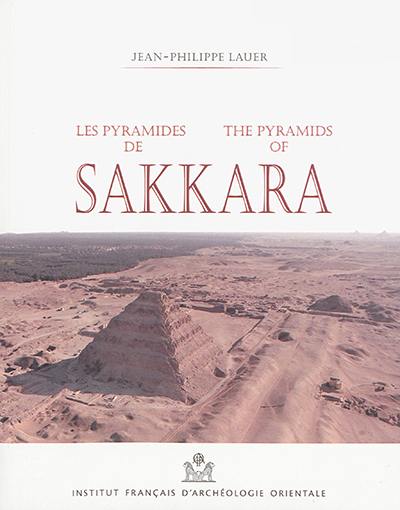
Collection(s) : Bibliothèque générale
Paru le 19/03/2015 | Broché IX-226 pages
Public motivé
préface Nicolas Grimal
Vers 2700 av. J.-C., le pharaon Néteri-khet, premier roi de la IIIe dynastie, plus connu sous le nom de Djoser, installe son complexe funéraire au centre de la nécropole de Sakkara, sur un endroit déjà sacré et vénéré depuis plus de 400 ans au cours des règnes précédents. Le point culminant de ce complexe, la célèbre Pyramide à degrés, reste encore aujourd'hui le bâtiment le plus élevé de Sakkara, avec autour les pyramides de Sekhemkhet, Ouserkaf, Ounas et Téti.
Around 2700 BC, Neteri-khet, the first pharaoh of the Third Dynasty of Egypt - better known today as Djoser - sited his funerary complex at the heart of the Sakkara necropolis. Kings before him had already made Sakkara a place of veneration over the four centuries preceding his reign, and later kings followed Djoser's example. Surrounded by the later pyramids of Sekhem-khet, Userkaf, Unis, and Teti, Djoser's famous Step Pyramid is still the tallest construction at Sakkara.
Jean-Philippe Lauer, fonctionnaire éternel du Service des Antiquités d'Égypte et directeur de recherche honoraire du CNRS, a consacré 75 ans de sa vie de centenaire au travail de reconstitution du complexe de Djoser. En 2015, l'Institut français d'archéologie orientale édite la septième édition du petit livre Les Pyramides de Sakkara, enrichie de nouvelles illustrations. Un humble témoignage devant l'oeuvre de Jean-Philippe Lauer, qui, à travers cet ouvrage, nous offre une véritable immersion dans l'histoire de Sakkara. Un texte riche et précis, ainsi que de nombreuses photographies, détaillent les différentes découvertes et le long processus de restauration du complexe de Djoser, qui nous fascine depuis tant d'années.
The French architect Jean-Philippe Lauer devoted seventy-five of his hundred years to Sakkara, as a permanent employee of the Service des Antiquités d'Égypte and honorary research director of the CNRS, working on the reconstruction of the Djoser complex.
In 2015, this seventh edition of The Pyramids of Sakkara, re-issued with new illustrations by the Institut français d'archéologie orientale, bears faithful witness to Jean-Philippe Lauer'swork. Its informative, succinct text and numerous illustrations provide an immersive experience of the site and give a clear account of the fascinating story of the discovery and long restoration of the Djoser complex.